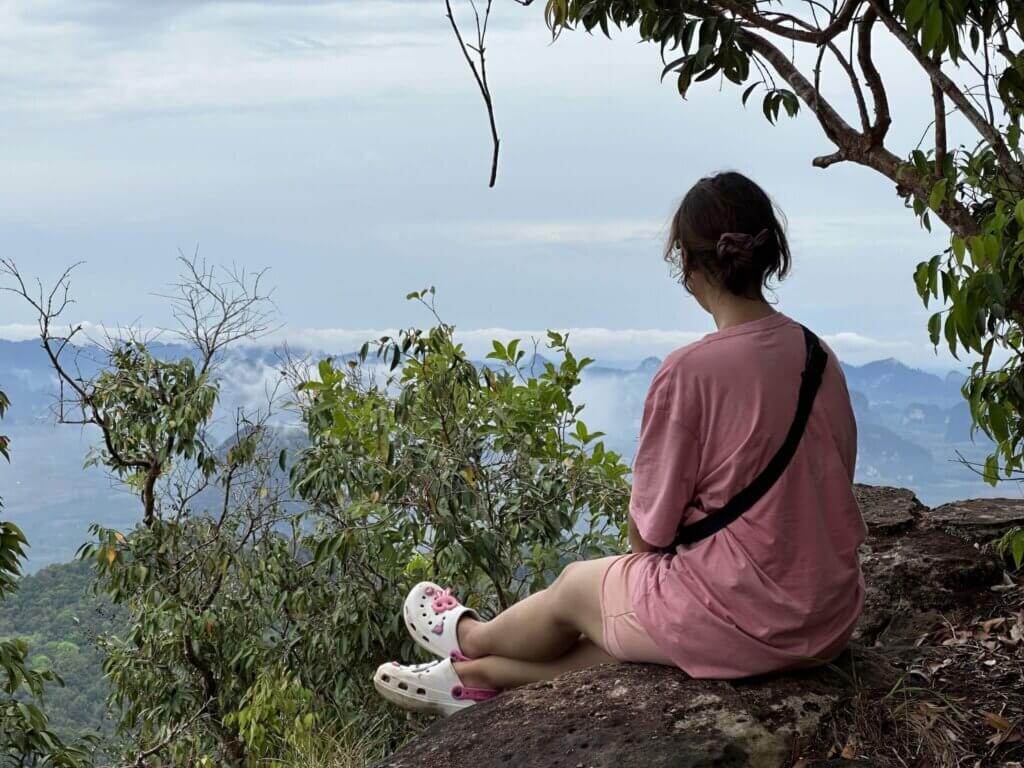Climbing mountains is super exciting! But it’s not just about being brave. It would help if you were smart too, especially when it comes to staying healthy. Acute Mountain Sickness (AMS) is a condition that can affect individuals who ascend to high altitudes, typically above 8,000 feet (about 2,400 meters), too quickly. That’s where knowing about mountain sickness comes in. It’s like picking the right shoes for your hike – essential!
Let’s talk about the early signs of mountain sickness. Understanding these signs will help you conquer the climb safely and have a great adventure.
Acute Mountain Sickness (AMS), a condition incited by changes in altitude, frequently manifests in inconspicuous ways, catching trekkers off guard. Recognizing these unexpected symptoms is crucial for ensuring a safe and enjoyable mountain experience. Symptoms of AMS can range from mild to severe and may include headache, nausea, fatigue, dizziness, and difficulty sleeping. In severe cases, AMS can progress to more serious conditions like High Altitude Pulmonary Edema (HAPE) or High Altitude Cerebral Edema (HACE), which can be life-threatening if not treated promptly.

Let’s delve into five surprising signs that may indicate AMS, shedding light on the lesser-known facets of this condition.
1. Gastric Distress: The Stealthy Indicator
Among the covert indicators of AMS lies gastric distress, they are appearing as indigestion or diarrhea. Many trekkers attribute these symptoms to dietary mishaps rather than altitude-related issues. However, gastrointestinal discomfort often heralds the onset of AMS, prompting travelers to heed the warning signs and take necessary precautions.
2. Nausea: The Silent Alarm
Nausea, often disregarded until it escalates into vomiting, is another subtle symptom of AMS. Trekkers experiencing queasiness may dismiss it as transient discomfort, oblivious to its significance. Acknowledging nausea as a potential sign of AMS enables early intervention, forestalling further escalation of the condition.
3. Insomnia: The Underestimated Red Flag
Sleeplessness amidst the tranquillity of the mountains may seem benign, attributed to unfamiliar sleeping arrangements. However, persistent insomnia, coupled with restlessness, could indicate AMS lurking beneath the surface. Recognizing sleep disturbances as a precursor to AMS allows trekkers to address the issue promptly, safeguarding their well-being.
4. Fatigue: The Deceptive Downturn
Unexpected fatigue, particularly among seasoned trekkers accustomed to physical exertion, warrants attention as a possible symptom of AMS. Despite adequate rest and nutrition, unexplained exhaustion may signal underlying altitude-related issues. Acknowledging fatigue as a potential precursor to AMS prompts proactive measures, averting possible complications.
5. Restlessness: The Subtle Unease
A sense of restlessness or unease, challenging to articulate yet palpable, often accompanies the onset of AMS. Trekkers may struggle to express their discomfort, dismissing it as transient unease. However, recognizing restlessness as a subtle indicator of AMS prompts vigilance, ensuring timely intervention and mitigating risks.
Additional Insights for Altitude Sickness
Understanding the Impact of Altitude on Menstrual Cycles
Altitude changes can affect menstrual cycles, potentially causing irregularities in timing and flow. Individuals need to be aware of these potential changes and plan accordingly to manage their menstrual health effectively during mountain treks.
Medication and Intervention Strategies for Mountain Sickness
Predicting who will fall ill from AMS can be challenging. However, individuals with a history of AMS or those ascending rapidly to high altitudes are at heightened risk. Implementing preventive measures such as gradual ascent and acclimatization strategies can help diminish the likelihood of AMS. For the treatment and prevention of acute altitude illness like AMS, medications such as Acetazolamide (Diamox) and Dexamethasone are commonly employed.
Acetazolamide facilitates acclimatization by augmenting ventilation, while dexamethasone mitigates the increase in pulmonary pressure at high altitudes. However, The most effective way to prevent AMS is through gradual acclimatization, staying properly hydrated, eating high-carbohydrate food, enough sleep, avoiding alcohol, and certain medications that can exacerbate symptoms, and descending to lower altitudes if symptoms become severe.

Supplemental oxygen can alleviate AMS symptoms and prevent complications, especially in severe cases or when immediate descent is not possible. However, consult with a healthcare professional before embarking on high-altitude adventures to discuss personalized preventive measures and medication plans tailored to individual needs.
Navigating the mountainscape encompasses more than conquering peaks; it necessitates vigilance and awareness of hidden hazards like AMS. By unraveling the subtle signs of mountain sickness and implementing preventive measures, trekkers empower themselves to respond effectively, safeguarding their health amidst nature’s grandeur.
Remember, in mountain adventures, comprehending the nuances of AMS could make all the difference between a memorable journey and an unforeseen ordeal.
Read More:



